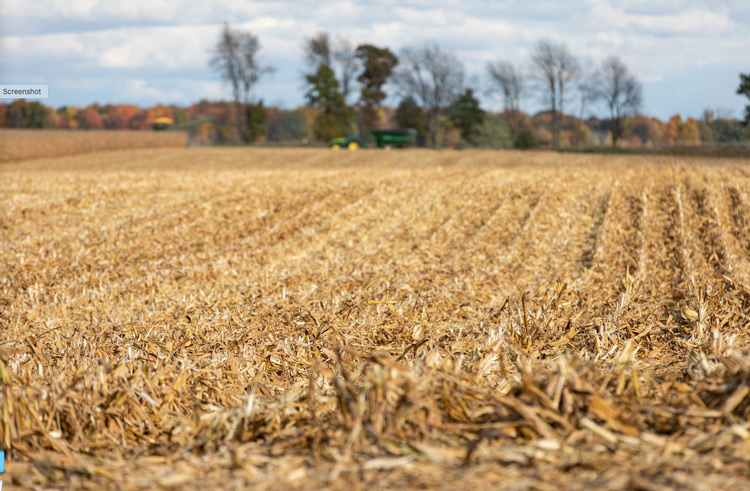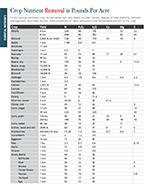Crop Fertility Reminders: Replenish what has been removed for a head start on your next crop |
|
|
This item has been supplied by a forage marketer and has not been edited, verified or endorsed by Hay & Forage Grower. Planning for next year’s crop is underway in earnest. Grain and fertilizer prices may have you thinking about skipping some normal fertility practices this year – particularly applying supplemental phosphorus and potassium. However, before making decisions, carefully consider all crop-nutrition-related factors.
“Taking the nutrient removal of the 2024 crop into consideration may seem like a no-brainer, but each year the growing season weather conditions change the equation,” says Kelsey Schneider, Wilbur-Ellis field agronomist.
For instance, nutrient uptake slows with lack of moisture. In areas hard hit by dry weather during the peak growing season, corn and soybeans simply did not grow to their full potential, thus the uptake of nutrients was reduced for the season. The nutrients left behind will be there for next year’s crop.
“Other areas had ideal growing conditions, tapping into soil reserves, especially if fertilizer was reduced in 2024. That’s why soil sampling and taking into consideration how much fertility you removed in the grain and stover you just harvested are so important in nutrient planning,” Schneider says. Phosphorus (P) and potassium (K) are essential nutrients to consider.

The importance of P and K to crop yields Schneider also reminds growers to always consider the role each nutrient plays in crop growth and yield before skipping or reducing applied fertility levels. While reducing fertilizer inputs may decrease initial input costs, it may not improve your bottom line.
Phosphorus is the main nutrient responsible for energy production in the plant. Without enough phosphorus to properly support energy production, corn cannot grow, produce or handle stress as it should. Phosphorus is used by soybeans for root development, photosynthesis and transferring energy into grain throughout the growing season.
Phosphorus requires moist soil for effective root uptake. As a result, dry soil conditions can negatively affect soil uptake by corn roots.
Uptake of phosphorus increases rapidly after about the V6 growth stage, approximately four to six weeks after corn planting and continues until near maturity.
Also, phosphorus-deficient corn plants grow slowly, stalks are thin and shortened, and maturity is usually delayed. Potassium is one of 12 nutrients needed for normal corn growth and development. It is especially important for stalk strength. Stalk dry-down is slowed when corn can uptake sufficient potassium, lowering the risk of lodging after the crop matures. The uptake of potassium increases rapidly after about the V6 growth stage, approximately four to six weeks after corn planting completed soon after silking (R1 stage). Dry soil conditions can also negatively affect soil uptake by corn roots. When potassium demand becomes large and there is not enough available, deficiency symptoms—yellow and brown margins beginning at the leaf tips—become visible. They are often confused with nitrogen deficiency. As crop genetics continue to increase yield potential, it is even more critical to manage soil fertility. “Be sure to sample soil at least every four years and more frequently as weather patterns continue to impact soil moisture, genetics change and crop yields increase,” Schneider says. “Talk with your local agronomist for help with soil sampling and tweaking your fertility program based on soil test results, crop yield potential and your yield goals.” To find the nearest Wilbur-Ellis agronomist visit www.WilburEllisAgribusiness.com. |
